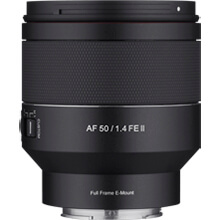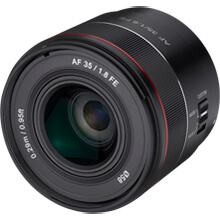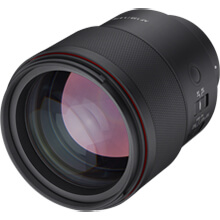
Love Captured
By Jay Gilmour | Photographer & Filmmaker, jaygilmour.co.uk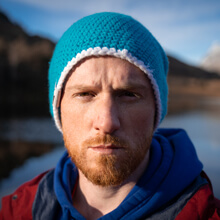
Weddings are a day of celebration and, for most, one of the most important events of their lives. Traditionally documented with a static collection of still images, they are now a cinematic experience. They are moving occasions to cherish and share.
Documenting such an emotional event requires a certain type of deftness of touch and storytelling skill to ensure that the day lives on as a treasured piece of memorabilia.
With the wedding season now upon us. We caught up with wedding videographer Jay Gilmour to ask him about how he tackles the ‘big day.’
How do you prepare for a wedding?
Well, the boring stuff is to make sure everything is charged, memory cards are formatted, and everything is there and working. I am methodical, to the point of being obsessive with my gear! Everything has its place (and labelled!). This has always helped me because if I forget a mic, a cable or even something small like a tripod plate it can be an absolute disaster. A lot of wedding photographers and videographers like to go and scout the venue beforehand, I am the complete opposite, I like to see it with fresh eyes, this gets my creative mind in gear much quicker and I do not have to worry about any planned shots I had had to change, which happens often, due to timings, weather or whatever it may be.
What goes into creating the perfect wedding memory?
‘God is in the detail,’ which seems fitting for a wedding!
The best weddings are personalised, with small touches the couples use to make it theirs. It could be anything, small gifts, those little moments and even pets getting in on the big day!
My job is to relive the couple’s experience through the filming and editing process. There is not a one size fits all approach. When it comes to wedding videography yes, I have my style, but this differs slightly from film to film. For example, if the wedding was upbeat and had a party vibe, the film should be the same. On the other hand, if the event was more heartfelt and sombre again the film should reflect this.
I also try to tell the story of the day through the smaller moments. Every wedding has the “I do’s” and the speeches (some good, some bad!). But not everyone has that wink from a future father-in-law to his new son-in-law when coming up the aisle, not every wedding has that usually hard-faced father shedding a small tear of how proud he is when seeing his daughter in the wedding dress for the first time.
These are the moments I absolutely love and completely make the day for me. In turn, this can make the project extra special, during the ceremony people might not notice these moments. However, when they are captured on screen, they can reignite memories again and again and that makes it all worthwhile.
Are there any big challenges that you face during a project?
Space is always an issue!
Physically, in Cumbria, our churches are beautiful, but small, and usually hundreds of years old. My village church dates to the 12th century! When it was built, I do not think they were thinking about wedding videographers! Ha-ha
Then, I can easily shoot 600-700 GB worth of footage in computer space, since I shoot 4K at 10-bit to get the best quality. It feels like I am constantly buying more space, even with the huge RAID drives I use.
During the wedding day itself, since I am working alone, it is sometimes difficult to prioritise or to know where you should be to get the most important shots of the day. For example, you need to be at the church/venue to set up, but one of the most important shots is the bridesmaids, the father or the bride’s reaction shot which happens just before they leave. So, knowing your kit, where everything is, what needs to be done, all in a ridiculously short space of time, is crucial.
But apart from that, I have done enough now that hopefully, I can deal with any unexpected changes that may (and will) happen. And sometimes that is when you get the best shots!
Advice to others/beginners?
I adore my job; I genuinely love the reactions from guests and family at the wedding and take great pride in the responses and comments I get from people watching my films. So, in that sense, I wholeheartedly recommend aspiring individuals who are thinking about it, to just go for it.
On the other side, it IS stressful, and it is a loooooong day! Working 12 hours non-stop with heavy gear is not for everyone.
If you are looking to start, the best and easiest way is to offer to do it for free or cheap if family/friends are getting married and do not have a videographer. That way there is less pressure to get it right the first time.
The next small tip is about gear when you first start you tend to buy lots! Most of it you will not use, some of it you will use then realise it is not right for you. In time, you will notice what are your go-to pieces and when you need to add more to your collection of gear for a specific request or event.
Play around with your gear to get to know it better, use videos by the company or on places such as YouTube to learn tips and tricks and make amendments where necessary to make sure it fits into your workflow.
Wedding Videography Checklist – Jay’s go-to kit
Whether you are a beginner or an experienced videographer, you need two cameras for a wedding. It gives you options on the angle and, more importantly, it can cover up mistakes or issues. Mistakes do and will happen, no matter how long you have been in the industry! I would suggest getting two cameras of the same brand, so you do not have any issues matching footage later.
Two cameras mean more than one lens. I use a Samyang 50mm f1.4 FE II primarily, a 35mm f1.8 and a 135mm f1.8 this gives me the coverage I need, and a variety of shot types. A nifty fifty and a wider angle are always easy to pick up cheaply if you are just starting.
I used a cheap recorder and a Lav mic from Amazon for sound. Was it great? Not really, but did it work? Yes.
That is all I used for my first wedding, and it was successful.
As you grow you will soon realise that creativity in your storytelling is key. No matter how expensive the gear you have, if you do not tell a story, it doesn’t matter. A straightforward way to add an establishing shot is with a drone. Drones are simple to use and relatively inexpensive. Just make sure you have the correct licence and insurance in place before flying.
Next on the list, in terms of a more advanced kit, is a gimbal and a monitor. A gimbal is not a necessity, but it’s a great add-on for that super-smooth cinematic look. An external monitor could easily belong in the ‘what to buy as a beginner’ category. It helps to compose a shot and has more advanced features for exposure and focusing. The Atomos Ninja V is my go-to monitor as it also records, so no need to worry about carrying multiple memory cards.
Good audio takes the right equipment and a lot of technical skill/instinct during the wedding shooting itself. You should arrive early and test the main things to focus on, which would be:
- Eliminate any unwanted noise sources before recording
- Outdoor shots mean wind noise - be careful!
- Check levels for the sound quality of speeches and dialogue
Being over-prepared can prevent a major disaster from occurring. Be cautious and have a backup plan in place, and if you are not confident in your skills yet, reach out to others in the industry to help you with the process and to give you pointers.
Last but by no means least are backups - the more the better! It is always a good idea to have multiples of everything - you never know what can go wrong on the day, so being prepared is the best option. It is a necessary evil in terms of videography and at such a momentous event you don’t want to be taking any chances with precious memories!
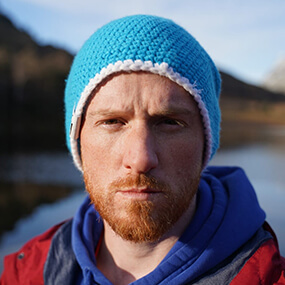
Jay Gilmour
Jay Gilmour is a Cumbrian based multi-award-winning landscape photographer, wedding videographer, short filmmaker, and ambassador for Samyang & Atomos (Link to both brands). Specialising in beautiful, elegant videos with a cinematic and modern twist.
For more information please contact our Sales Desk:
+44 (0)1457 851000 | sales@holdan.co.uk.
27 Nov 2025
PTZOptics: Versatile, Professional PTZ Solutions for Every Production Environment
19 Nov 2025
Expanding Possibilities: Introducing Sonnet Technologies’ High-Performance Solutions for Apple and Professional Workflows
14 Nov 2025
Take Command of Your Creativity: Meet the Elgato Stream Deck Family
26 Sep 2025
Lumens VC-TR60A PTZ Camera Earns Microsoft Teams Certification
